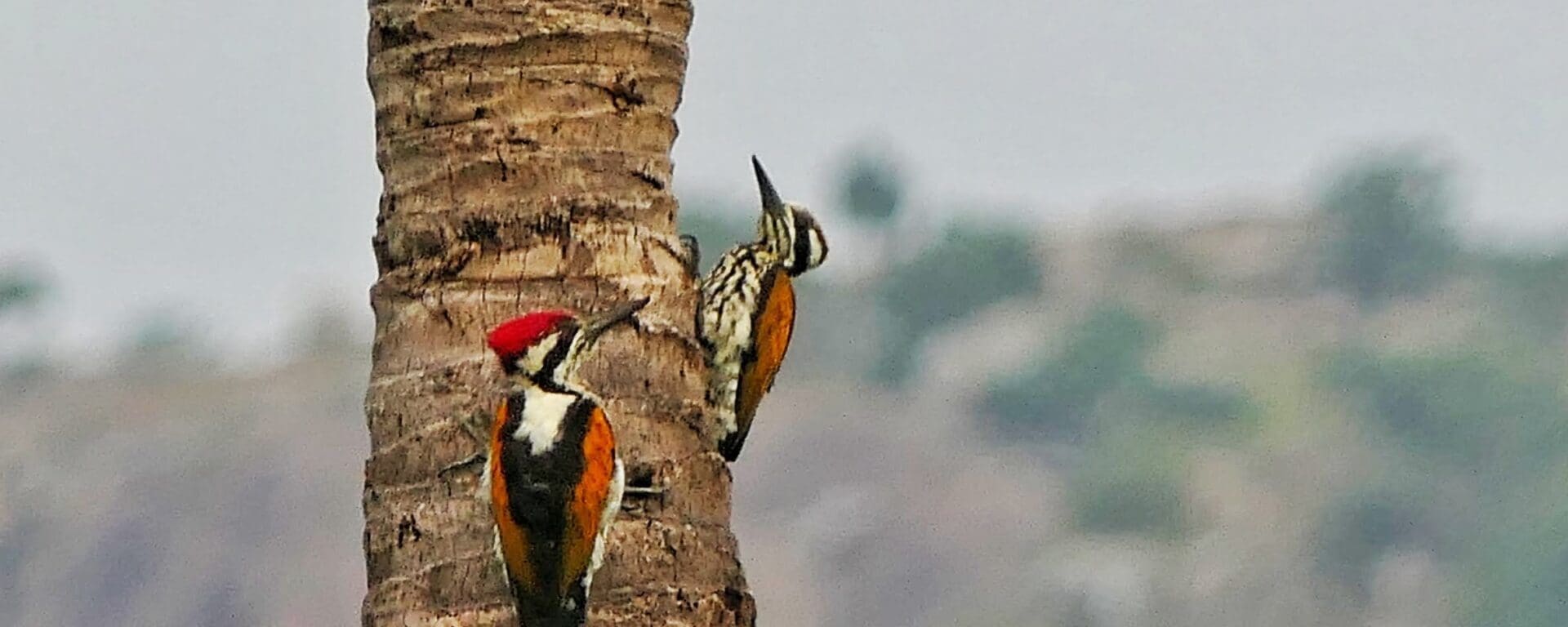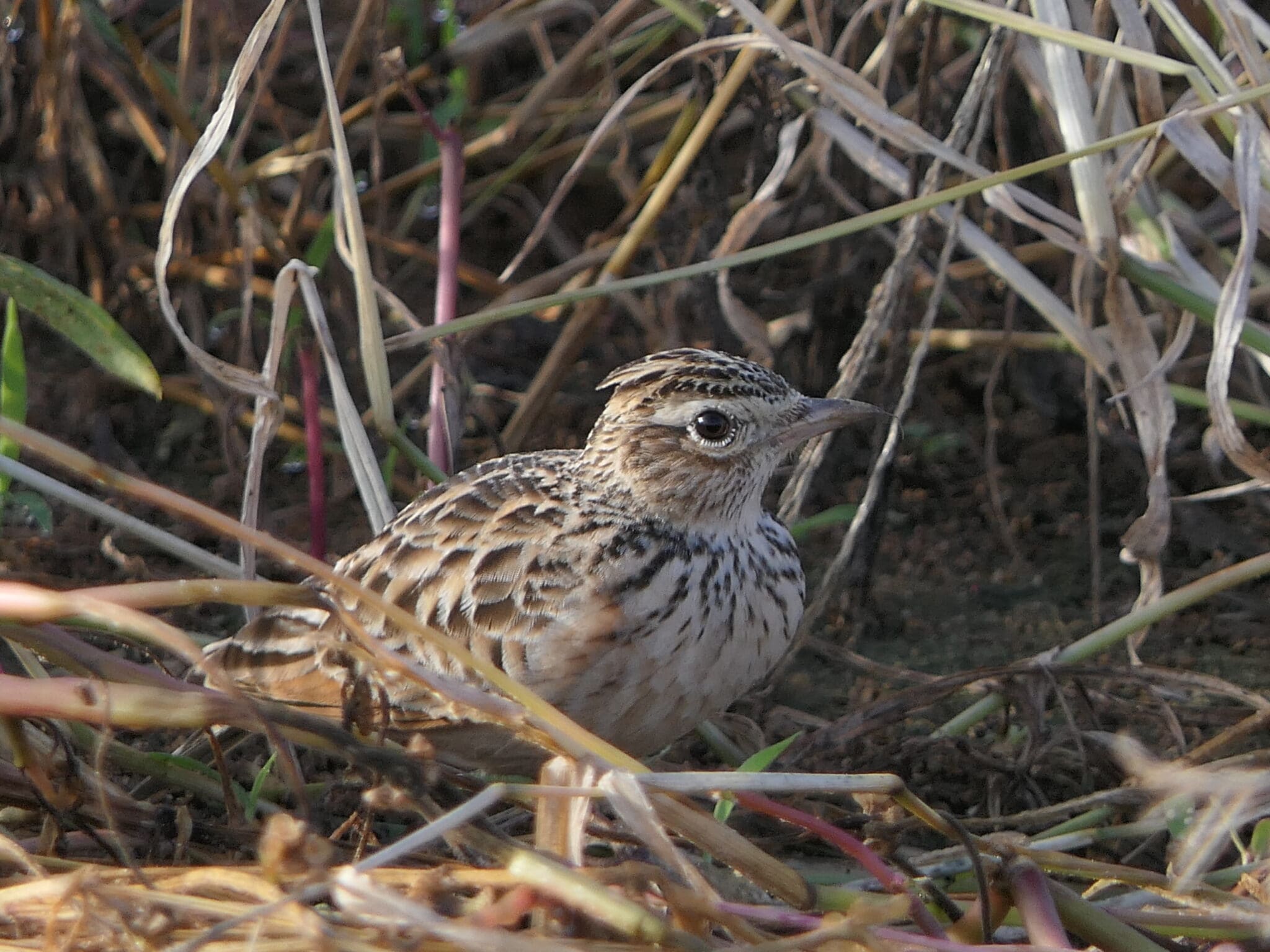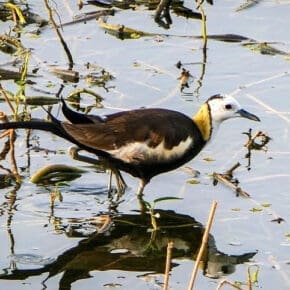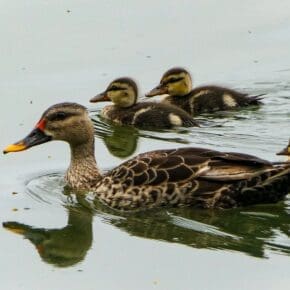In September this year, while birding with a group of students at Rishi Valley School, we chanced upon a pair of White-naped Woodpeckers. Endemic to the Indian subcontinent, these intriguing golden-backed woodpeckers are always an exciting sighting for birders.
White-naped Woodpeckers are not as common as Black-rumped Flamebacks or Lesser Golden-backed Woodpeckers, which are the most common woodpecker species in the urban and suburban woodlands of peninsular India, especially in the hinterland away from the coastal plain west of the Western Ghats. They inhabit open forest and cultivation edges.
The White-naped Woodpecker (Chrysocolaptes festivus) has a much stronger bill than the smaller Black-rumped Flameback (Dinopium benghalense), although the bird itself is only a little larger than the latter. Its heavy, chisel-like bill is a power tool, which earns it a place in the same genus as the much larger Greater Flameback (Chrysocolaptes guttacristatus) and the recently split species, the Malabar Flameback (C. socialis).

As with most woodpeckers, the sexes are easy to tell apart. The male has a red crown while the female has a yellow crown. The White-naped Woodpecker’s call is also quite distinct — a series of short, sharp notes unlike the trailing laugh of the Black-rumped Flameback.
The Latin binomial of this species is interesting. The genus Chrysocolaptes roughly translates to the Greek for ‘golden chiseller’ and the species name festivus is Latin for cheerful or festive, a very apt name indeed once you observe the bird at work in its natural habitat.
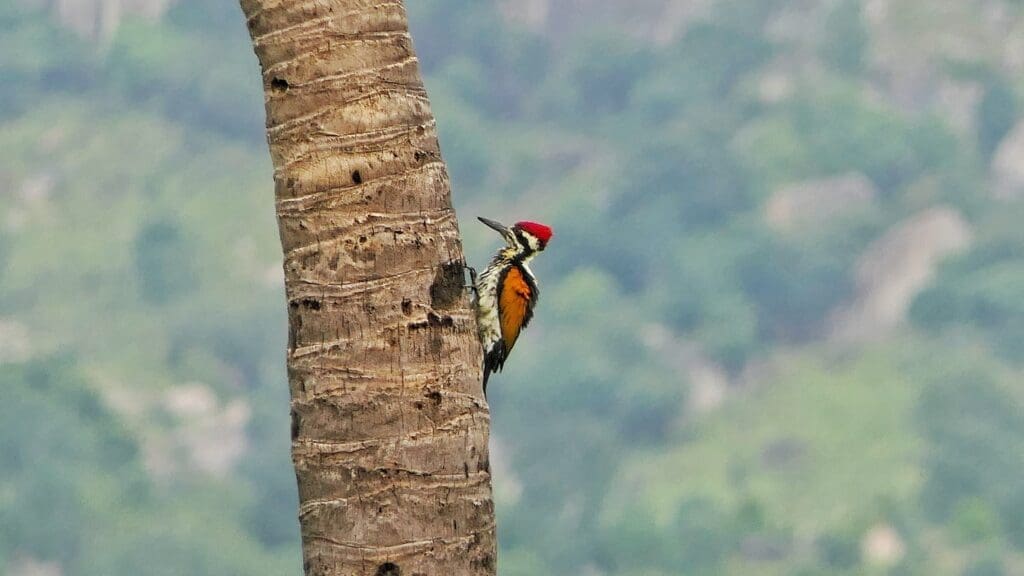
We watched this pair of White-naped Woodpeckers inspect the gnarled bark of an Indian date palm in a clearing among some fields, calling to each other as they circled the trunk inspecting it for beetle larvae hiding in the heartwood. They were soon joined by a pair of Black-rumped Flamebacks before they became camera-shy and shot off into the woodland.
- TL;DR – Death Stalks Like A Marabou Stork - July 24, 2024
- Dimorphic Egret – Meet this East African mystery bird - June 8, 2024
- Encounter: Northern Treeshrew in Arunachal Pradesh - May 19, 2024

